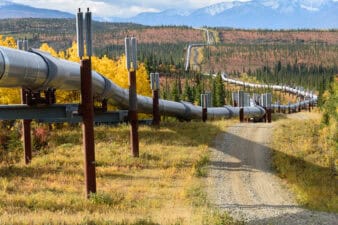Crescent Point Energy Corp. (TSX:CPG)(NYSE:CPG) recently put out its 2016 capex plan, which its CEO called “conservative and disciplined.” On one hand, it’s hard to argue with that because spending is expected to meaningfully decline from last year. That being said, there’s a case to be made that the company’s plan is actually a bit on the bullish side given the growth-focused nature of the plan.
Showing restraint?
Crescent Point expects to spend between $950 million and $1.3 billion on capex in 2016, which is 16-39% below what it spent last year. That will enable the company to live within its cash flow and protect its balance sheet. However, thanks to a more than 30% drop in its well costs, the company’s production will still be 1-5% above what it produced in 2015. Given that the current oil market its oversupplied with crude, growing its production seems rather bullish.
The case could be made that the company should only aim to keep its production steady, if not allow it to decline to aid and not hinder the market’s attempt to rebalance. Having said that, Crescent Point’s production will come down from its 2015 exit rate of 175,000 BOE/d given that its 2016 average will be between 165,000 BOE/d and 172,000 BOE/d.
Still, with its production ahead of last year’s average, all that excess production will only end up in storage until the oil glut dissipates, so it would make more sense for the company to leave that incremental oil in the ground by holding off its growth-focused investments until the market needs more oil and gas.
Walking a fine line
The other issue with the company’s 2016 capex plan is the fact that it doesn’t leave it a lot of wiggle room. While Crescent Point expects to live within its cash flow, it assumes that oil prices will range between $40 and $60 a barrel in 2016. If oil keeps heading lower from its current price in the low $30s, Crescent Point could be in trouble because only 34% of the company’s production is hedged, which leaves it fairly well exposed should prices keep falling.
In fact, the low end of the company’s 2016 capex plan would see it spend $950 million, which would equal 100% of its available cash flow at a $40 oil price. In other words, if oil averages less than $40 a barrel in 2016, then Crescent Point will need to either suspend its dividend, sell assets, or grow its debt to fund the difference.
Growing its debt under that scenario would be tough to do given that its debt-to-funds flow from operations would already be at an elevated 2.8 times at a $40 oil price. That’s almost three times higher than its average debt-to-cash flow ratio over the past decade, which shows just how steeply its cash flow has fallen in the past year.
Investor takeaway
One of the reasons why oil prices continue to fall is because oil producers keep growing production even though there is a glut of oil on the market. This growth has only exacerbated the problem, pushing oil prices lower. That’s why Crescent Point’s plan to grow its production in 2016 might not be the best idea. The company really shouldn’t be investing to grow production in a market that doesn’t yet need any more oil.
Instead, it would be better off conserving cash and keeping that oil in the ground until the price of oil is meaningfully higher.






